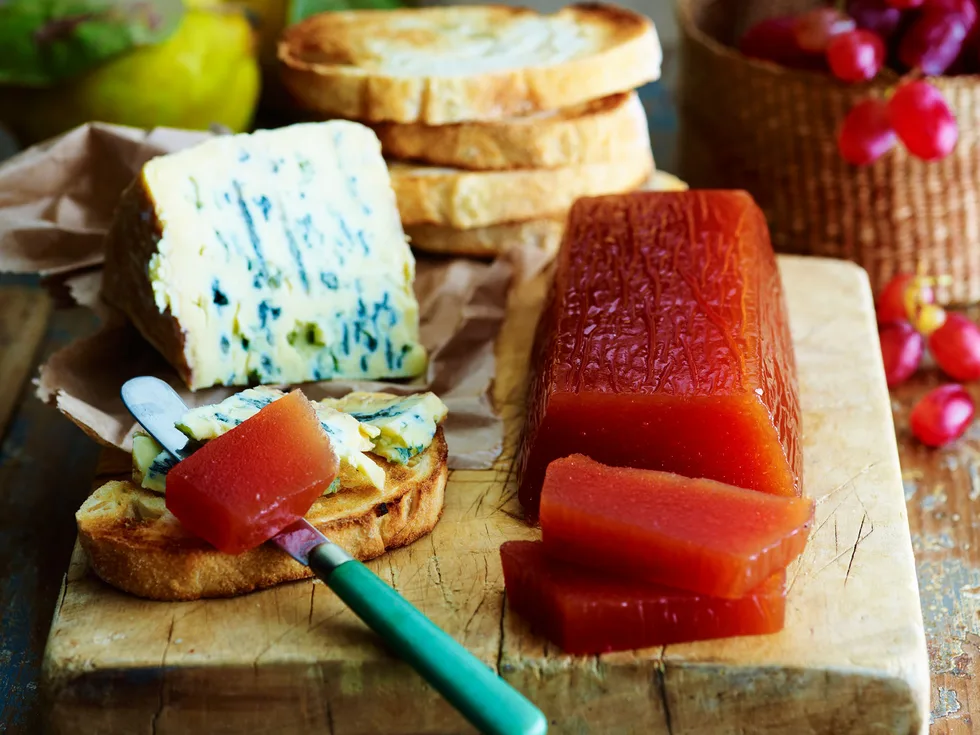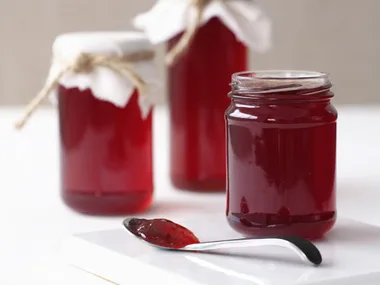Ingredients
Method
1.Wash, peel and core quinces. Chop quince flesh coarsely and place in large saucepan. Tie peel and cores in a small piece of muslin to form a bag. Add to the quinces in the pan.
2.Add enough water to cover the quinces and boil, covered 30 minutes or until fruit is very soft. Remove muslin bag and push flesh through a fine sieve into a bowl. Alternatively you can process the fruit until very smooth (however, this method is only good if you have been very thorough in removing all skin, parts of the core and seeds from the quinces when preparing them).
3.Weigh the fruit pulp. You should have about 1.25kg of fruit pulp. Weigh out an equal amount of sugar.
4.Combine sugar and fruit pulp in the same cleaned saucepan. Cook, stirring over a low heat until the sugar dissolves. Continue to cook, stirring every 5-10 minutes, until the quince paste is very thick and a deep ruby colour. At this stage a wooden spoon drawn through the paste will leave a very distinct trail across the bottom of the pan. This will take approximately 1 1/2 hours.
5.Transfer cooked paste to a lightly greased and lined 20cm x 30cm lamington pan. Spread paste flat.
6.Place in fan-forced oven with only the fan working (no temperature set) overnight or for several hours to dry out. Alternatively you can dry the paste in a very low oven (90°C) for several hours, or you could use a traditional method for drying the paste: in the sunshine if you have constant sunshine, in an airing cupboard, or in a gas oven with the pilot light on.
7.Whichever way you dry it, wrap it in baking paper and foil and then place in an airtight container.
Your quince paste should keep indefinitely. It’s a great accompaniment to cheese, or can be melted down and used in fruit tarts and pies. It should be cut into small wedges or squares to serve.
Note


